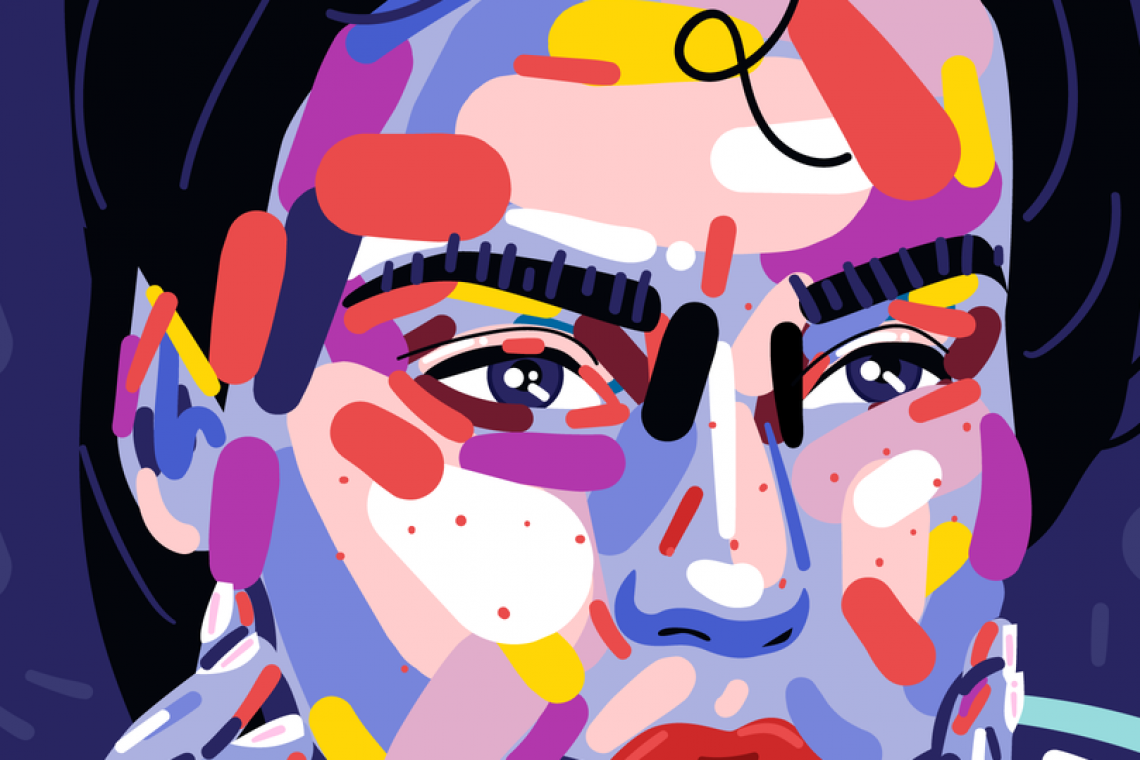Dr Colin Michie FRCPCH FRSPH FLS
Social media searches related to acne have increased during the pandemic. Pimply skins are attracting increasing attention from sufferers, as well as the beauty industry. Perhaps more time for reflection has led us to acknowledge our mental struggles with spots, wens or hickeys. Our largest organ, our skin, has been exposed by Covid-19.
What is acne?
Acne may be humankind’s most common skin problem. It is not lethal but has amazing impacts – cosmetic, psychological, behavioural, economic and social. Over 70% of us will develop acne as teenagers, with enlarged and inflamed sebaceous glands, particularly around our faces, backs and chests. Pimples, whiteheads or blackheads may evolve into deeper cysts, leading to scarring and pigmentary changes. Acne persists in over a third of us as adults.
Our keratin skins are kept supple by a thin layer of sebum and sweat. These emerge through many millions of tunnels from deeply buried sebaceous and sweat glands. Patterns of sebum are left behind in your fingerprints, although most sebum is produced in your scalp. Sebum plays a central part in epidermal health, reducing dryness, scaling, allergies and itching. Adolescent hormones increase sebum production. Together with larger numbers of skin bacteria, in particular Cutibacterium acnes, these secretions become associated with blocked pores or comedones. Inflammation of these causes acne. Outbreaks of spots continue for many women with their hormonal cycles, in pregnancy, or during the menopause.
Moderate or severe acne may run in your family – do you have your uncle’s oily skin? Acne is more common in those who are overweight. Some find associations with high fat and sugar intakes, but these have not been shown to cause spots to form in everyone. There may be a link in some young women with a relatively common endocrine disorder, polycystic ovarian syndrome, that alters hormones to a more masculine pattern. Understanding the ecology of sebaceous glands, their many nerves, endocrine drivers, nutritional requirements, bacterial and yeasty associates, our general health is evolving.
The social background
For most of her secondary school years, my cousin disappeared mysteriously during breaks with her friends, apparently to repair their makeup. This habit continued through college and in her workplace too! Since records began, the fashion and beauty industries, and many medical treatments focused on trying to camouflage acne – literally and socially. Words such as “pimple” “bouton”, “flaws”, “imperfections” and “blemish” support perceptions of acne shame, damaging self-esteem and generating social anxieties. Unattainable targets of a “clear skin” have been paraded in front of all of us by media and well-meaning relatives since birth. Curiously, dolls, heroes, heroines, your average film monster or even cartoon creation rarely have acne. Fortunately, “Acne Positivity” is kicking back. At last unreasonable biases are being publicised and the futility of pursing mirages of skin-based perfections are being highlighted.
Treatments, new old and uncertain
Treatments for acne should be staged. Small pimples can be managed with skin disinfection and cleaning; coconut oil has mild disinfectant properties; benzyl peroxide is commonly recommended too. Moderate to severe acne, however, requires directed treatment. Go to a doctor – acne should not be neglected! Aim for spot control with courses of treatment over several months, so as to prevent long-term scarring of the skin, and psyche. Several newer, specific pharmacological treatments reduce inflammation, spot number and spot size. There has been progress, but no magic cure.
Therapies are commonly prescribed in combination, as creams, lotions and oral medications. Effective agents include antimicrobials, retinoids and hormone treatments. Less powerful, or useful for only some are dietary changes, mineral and other nutritional supplements, treatments with lasers, peeling agents or one of legions of complementary strategies. There is a very great need for careful, unbiased, large trials of these therapies alongside the pharmacologically proven agents.
Antimicrobial treatments reduce skin bacteria populations. Many of us are likely to use antibiotics for acne. Tetracyclines and antimicrobial peptides all need to be used responsibly, however, in order to avoid the development of antibiotic resistance. Retinoids are a family of compounds derived from vitamin A. They reduce inflammation and skin scarring by collagen. However, a caution here too – retinoids can damage the foetus, so those taking them by mouth need to ensure contraception. A mixed contraceptive pill may reduce acne problems for some women by rebalancing endocrine commands to sebaceous glands. A hypertensive medication, spironolactone can reduce acne by similar mechanisms.
Re-normalise expectations...
We should all talk more about our dappled coats, our spots, their stigmas. Acne must not blight the lives of the young or the old. Beware of miracle cures or on-line advertising that looks too good to be true. We need to be careful stewards of precious antibiotics. Covid-19 is shining a bright light into how we look at and see our skins, the beauties of our harsh surfaces.
Useful resources:
https://www.nhs.uk/conditions/acne/
https://www.aad.org/public/diseases/acne
https://www.bad.org.uk/shared/get-file.ashx?id=65&itemtype=document







